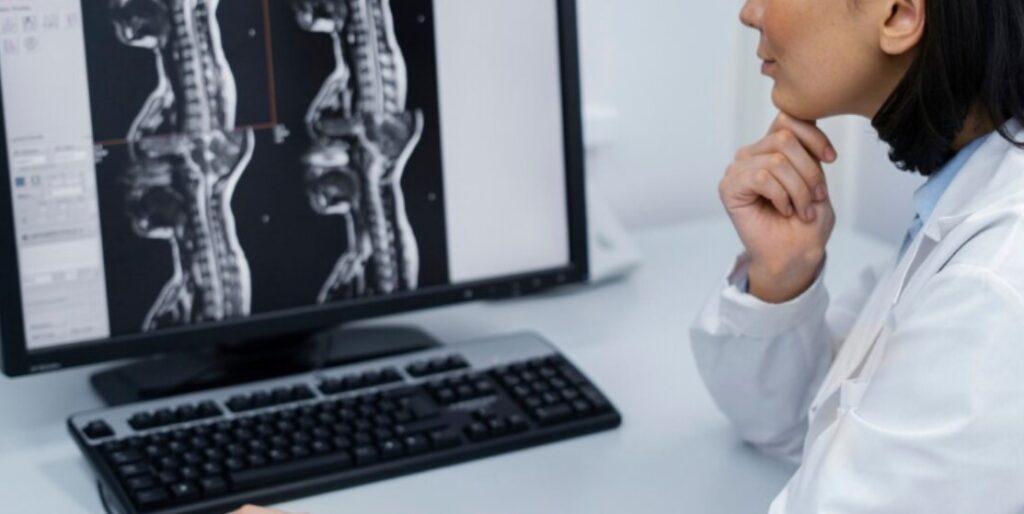A PET Scan is positron emission tomography scan, it is a diagnostic imaging technique that uses radioactive contrast medium to help produce scan images. These scan images can help your doctor to evaluate and determine any disease or conditions such as tumour occuring in brain, heart etc and to diagnose other conditions.
How Does PET Scan Work?
The PET scan can detect abnormal biological functioning of cells. A contrast medium or radioactive dye/liquid is injected into your veins of arm or hand via catheter. Most commonly used radioactive dye is FDG- fluorodeoxyglucose. FDG is a simple sugar compound- it is a glucose compound which is radiolabeled. This sugar gets absorbed by the cells and gives them energy to perform functions.
The rate of sugar being absorbed by your cells determines the functioning and abnormality. Cancer cells tend to take up this radiolabelled sugar on a higher rate determining their functional abnormality, thereby helping in the detection and diagnosis. The increased uptake of this contrast dye shows as hotspots on the scan images.
Why And When Is A PET Scan Done?
PET scan can be used to diagnose abnormal activity of cells by determined by their sugar uptake,thereby helping in diagnosis of cancer-
- It can help diagnose cancer and know how much it has spread, it can help in further treatment planning and its approach.
- It can be used to keep an eye on your cancer treatment progress, so as to know how it is responding to the treatment.
- It can help your doctor to check your brain functioning when you are showing symptoms of any cognitive problems
- It can detect areas where poor blood flow is going to the organs such as heart
- It can detect tumours of various body parts such as lungs. The Mass can be cancerous or noncancerous.
- It can be used to identify the source (for epileptic attack) in the brain.
- It can show if your cancer has returned.
How To Prepare For The PET Scan?
- You should not eat anything 4-6 hours prior to the scan
- You can drink clear fluids like plain water or pulpless juices before the test.
- You should tell your healthcare professional about-
- Pregnancy if you have
- Any disease such as diabetes or kidney problems
- Allergies if you have
- If you had a scan before for the scan area
- If you are claustrophobic
How Does The Test Feel?
- When you are being injected with the contrast medium, you might feel the needle prick pain. The price pain typically stays only for a second or two.
- The PET scanning procedure per se is a painless procedure.
- While scanning you need to lie on a table, the scan table might feel hard
- If you feel any discomfort during scanning, you can talk to your technician via intercom facility.
What Are The Risks Associated With A PET Scan?
- Exposure to radiation has a small risk of tissue damage which can cause cancer. Although the risk of someone developing cancer due to a single scan is negligible. Multiple exposure to radiation based imaging over a short span can be the cause of cancer.
- Children and pregnant women are more susceptible to radiation, hence should not be exposed unless indicated. Alternate imagining methods can be opted in such conditions like USG or MRI scan.
- The tracer being injected can cause allergic reactions in some people which may represent as a red, swollen and itchy skin. Nausea and vomiting along with dizziness/lightheadedness can be felt. Although these symptoms may resolve by themselves or may need medication. However drinking plenty of water after the scan can help drain the tracer at a faster rate.
Conclusion
PET scan is a diagnostic imaging technique in the advanced era of technology. Book your appointment to get diagnosed with the suspected condition so as to prevent its progression. There are many diagnostic centres all across, choose the best PET Scan centre for your health for reliable results and effective treatment.
